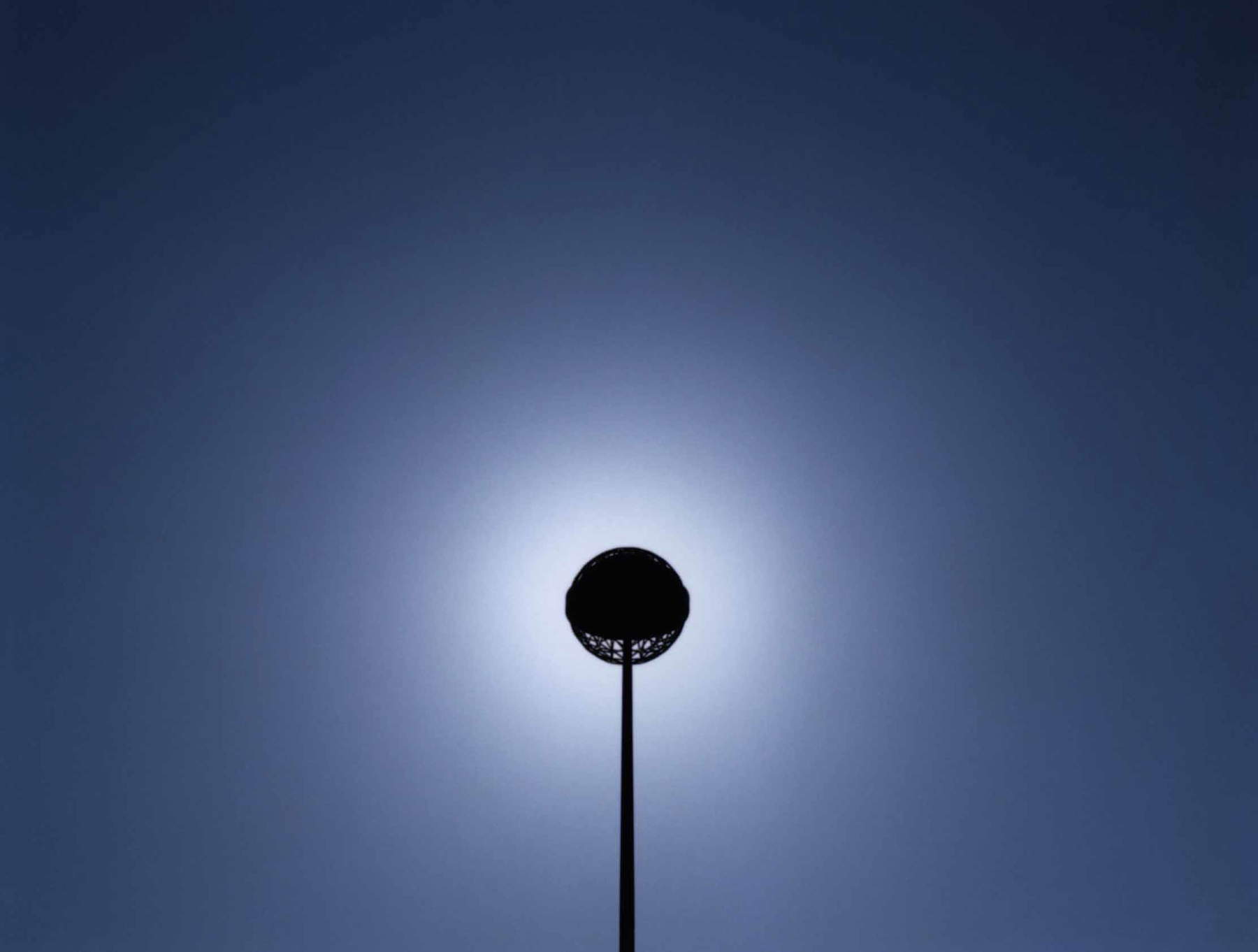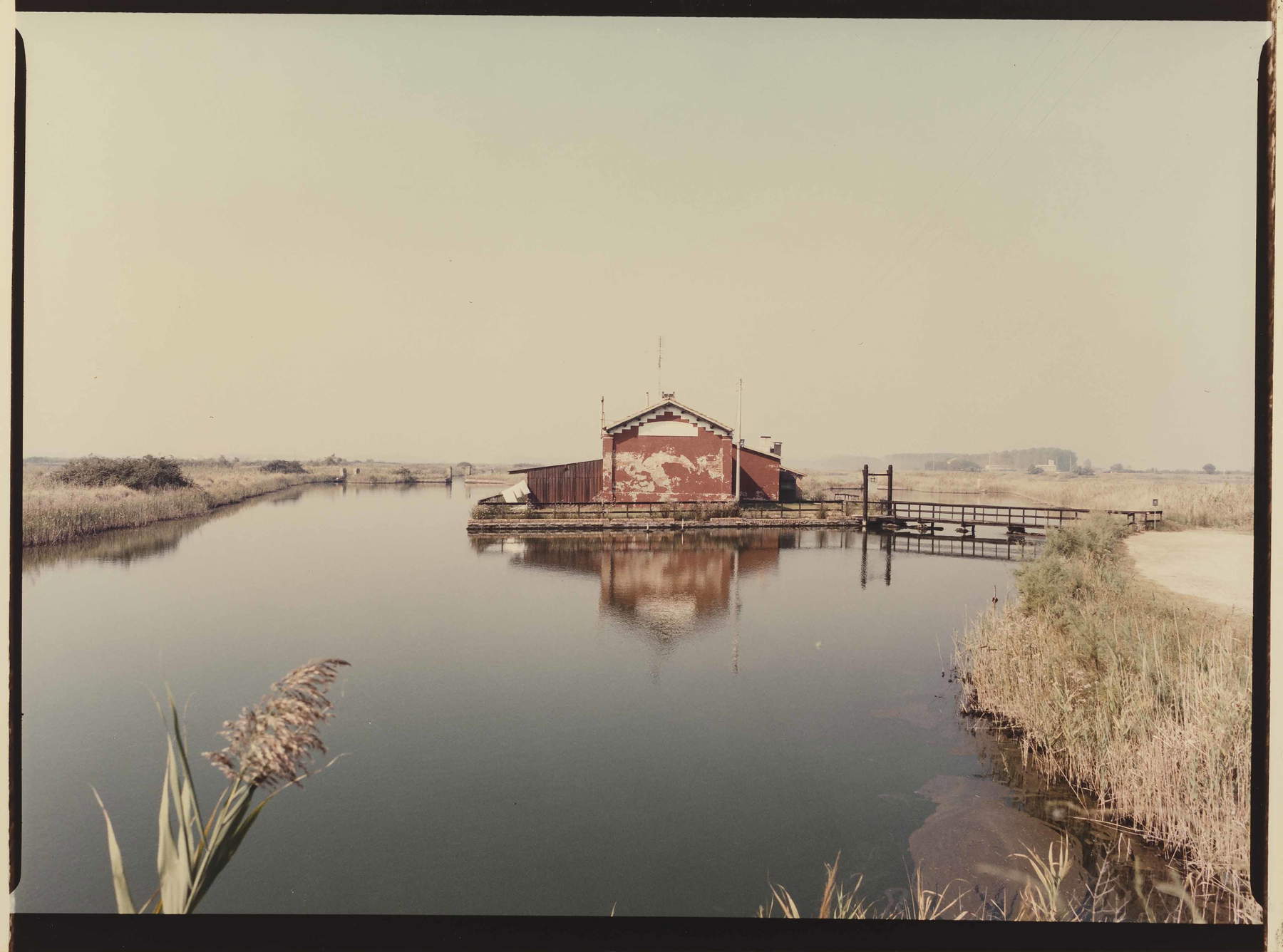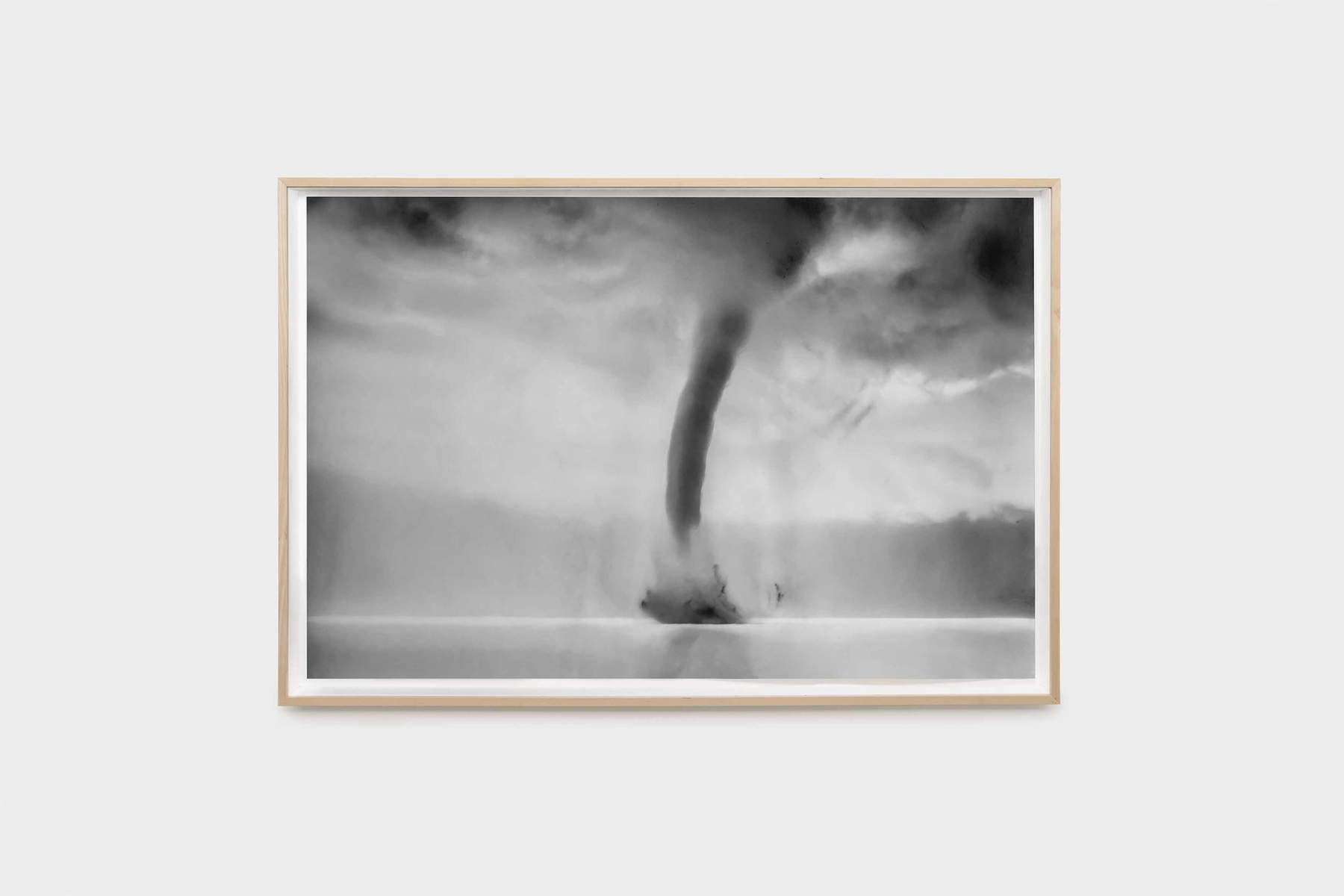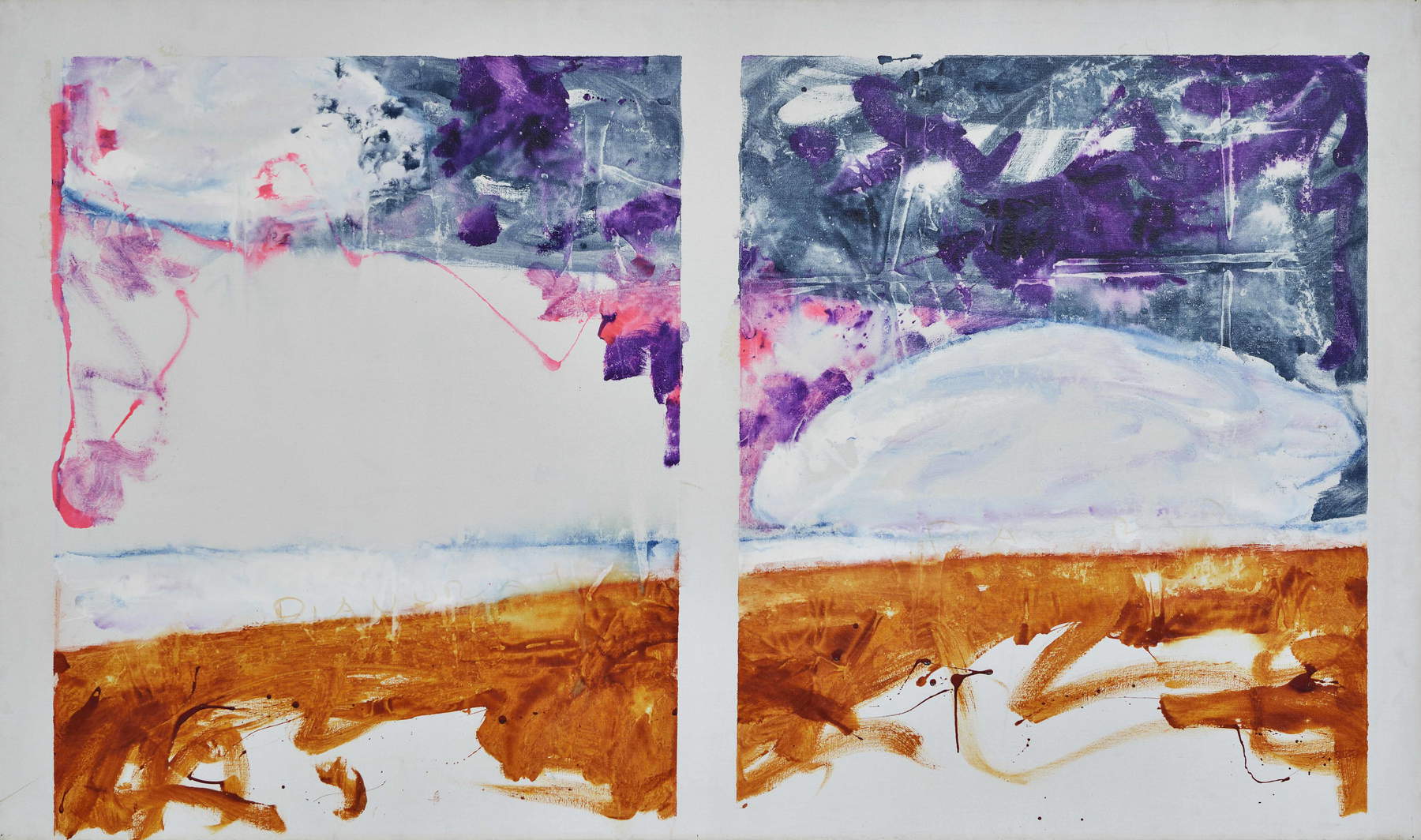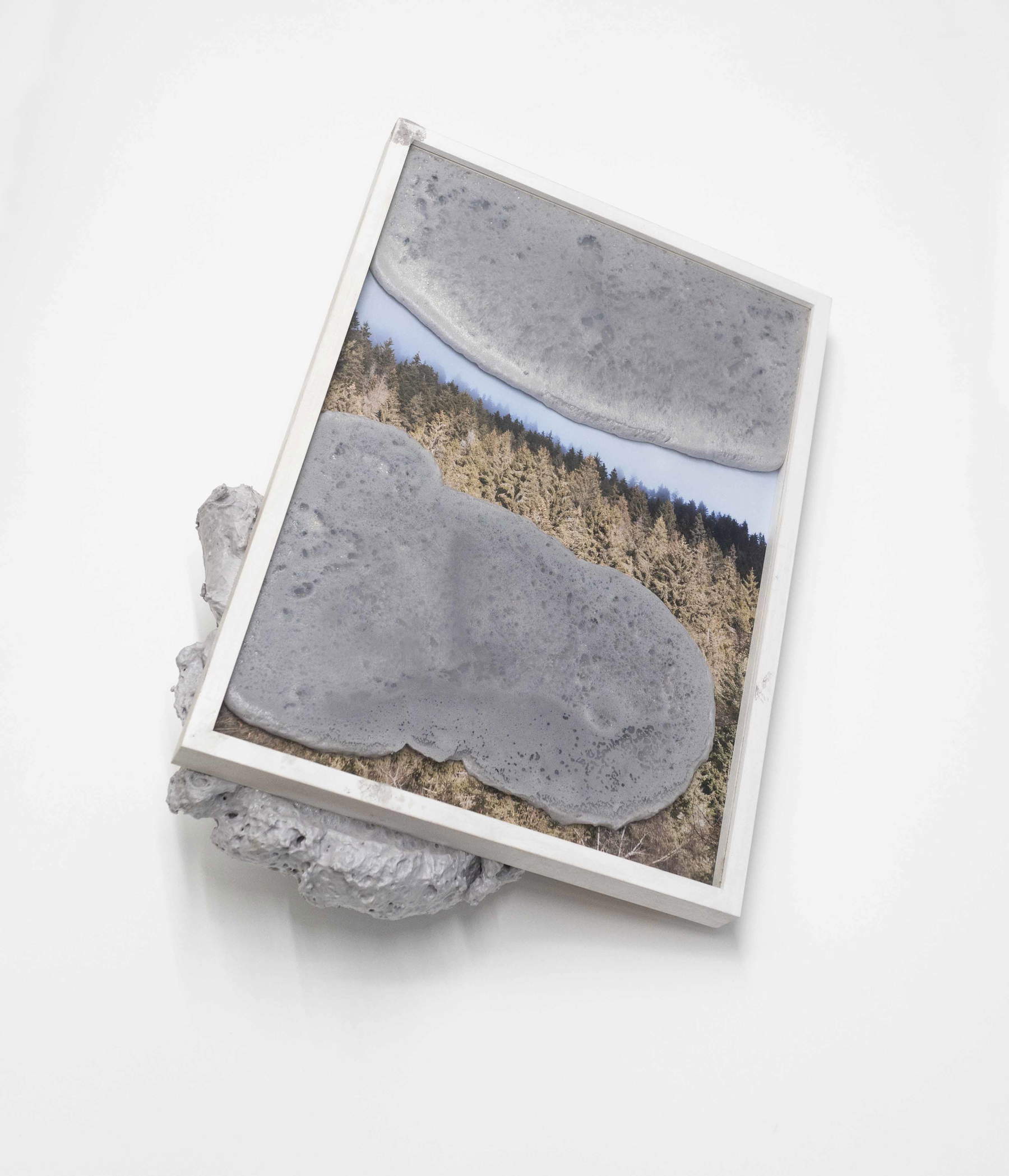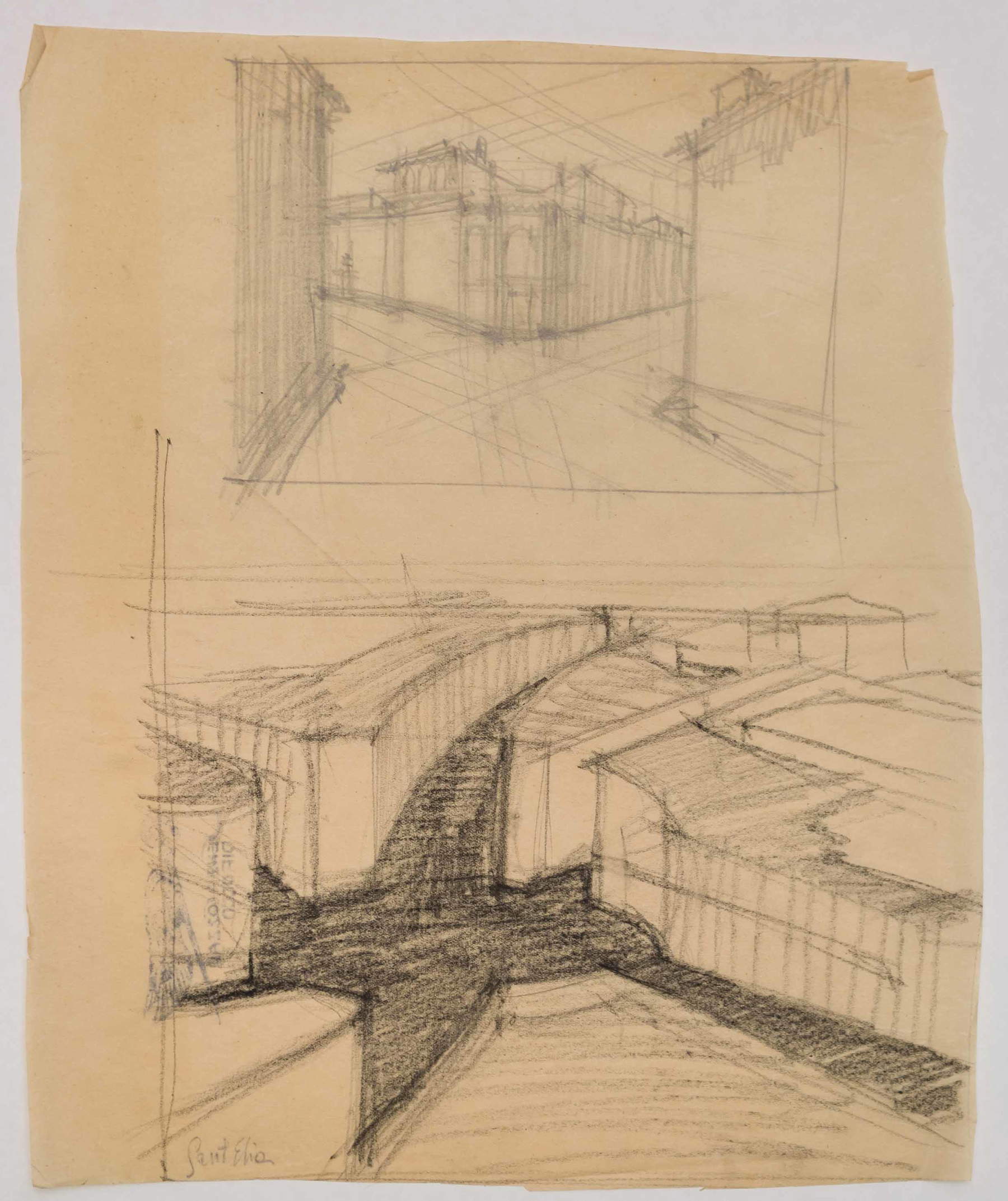by Redazione , published on 31/01/2019
Categories: Exhibitions
/ Disclaimer
In Bologna, from January 29 to April 13, the Fondazione del Monte di Bologna e Ravenna is hosting the exhibition 'Panorama. Landings and Drifts of Landscape in Italy'.
From January 29 to April 13, 2019, the Fondazione del Monte di Bologna e Ravenna is hosting the exhibition Panorama. Landings and Drifts of Landscape in Italy, curated by Claudio Musso. It is an exhibition that aims to show the public theevolution of landscape in contemporary Italian art, with works by four historicized artists (Antonio Sant’Elia, Mario Schifano, Superstudio, Luigi Ghirri) and seventeen contemporary artists (Andreco, Riccardo Benassi, Mauro Ceolin, Andrea Chiesi, Luca Coclite, Valentina D’Amaro, Andrea De Stefani, Martino Genchi, Daniel González, Filippo Minelli, Margherita Moscardini, Giovanni Oberti, Francesco Pedrini, Laura Pugno, Marco Strappato, and Davide Tranchina), for a total of over forty works.
The concept of landscape has undergone an overwhelming evolution during the 20th century: disciplines such as architecture, anthropology, sociology, and semiotics have opened a debate, still ongoing, in which the visual arts have played a leading role. The ambiguous nature of the word “landscape” itself means that within its semantic field lie meanings that over the decades have proven to be in constant contradiction: the urban and the suburban, the center and the periphery, order and disorder, the spontaneous and the planned.
An illustrious precedent makes Bologna the perfect city to host the exhibition: at the turn of 1981 and 1982, in fact, at the Galleria d’Arte Moderna (GAM) a committee led by Tomàs Maldonado organized an event entitled Landscape: image and reality, whose catalog is still an important tool for analysis and in-depth study. More than 35 years later, the Fondazione del Monte di Bologna e Ravenna is reconnecting that thread by offering a “panoramic view” of the new art scene, between continuity and discontinuity.
“The exhibition,” explains curator Claudio Musso, “aims to investigate a genre dear to the history of art, landscape. The invited artists have developed in their individual and collective researches a novel approach to the questions opened by the chain of relationships between nature and architecture, map and territory, reality and representation. The works exhibited,” Musso continues, "while made through a wide variety of proposals and techniques, demonstrate the common need to investigate the main issues related to the conception of landscape in the contemporary world: from politics to ecology, from culture to tourism.
The itinerary, where works by contemporary artists confront Antonio Sant’Elia’s dynamic urban scenarios, a large “anemic landscape” by Mario Schifano, the dystopian projects of Superstudio and some iconic shots by Luigi Ghirri, begins with paintings by Andrea Chiesi, who finds spaces of meditation in the interiors of disused factories and in wide urban and suburban views. It continues with Valentina D’Amaro who, in the Viridis series, moves on the border between organized greenery and spontaneous flora, while in the large drawings of the Tornado cycle, Francesco Pedrini recalls the sublime in nature and the uncontrollability of phenomena. Strada stellare (Stellar Road ) is a series of shots taken by Davide Tranchina on the Via Emilia, near Bologna, in which the lens is turned upward to look for lines and shapes (pylons, signs) impressed by backlighting. Daniel Gonzàlez ’s ephemeral architectures impose themselves as a momentary change of perspective on the exhibition space to the point of disrupting it.
In his research between installations for public space and performative actions, Andreco starts from his training as an environmental engineer and activates a dialogical relationship with nature, committed to issues of sustainability. Andrea De Stefani ’s sculptures and environments evoke the feeling of déjà-vu and open up unprecedented dimensions on peripheral areas. Margherita Moscardini with the rearrangement of the works Fig. A and Maquette (2013) together with the unpublished video The Mountains’ Factory points attention to the contradiction between geography and politics connected to the idea of borders. With Autostrada Verticale, Riccardo Benassi establishes a direct dialogue with the anthropological visions of Superstudio that are also echoed in the social analyses of the landscape based on biographical experience in the series Così per dire.
Mauro Ceolin after “walking” in video games, with DeerHuntLandscapes “freezes” views and then paints them en plein (digital) air. Laura Pugno subjects the photographed landscape to actions of “erasure,” albeit partial, that obtund the overall vision as happens in Dominante Recessivo. In David Casini’s work, objects, forms and images of the landscape are used as parts of a narrative rooted in craftsmanship. Luca Coclite investigates the extreme lands of the country, particularly the Capo di Leuca, as an expression of a geographical threshold to which encounters of cultures correspond.
In Martino Genchi’s Shelf, two elements (one wooden and one plastic) divided by a line (the horizon) appear as emanations of celestial and terrestrial. The landscape is given by synecdoche, as with the palm trees in the series 32 days at Rupert, Vilnius. Looking into the wood, dreaming palm trees by Marco Strappato and for the coconuts in Three Half Dozen (a work made with Giovanni Oberti), which, starting from recognizable elements, immediately refer to the desert island, the fairy tale, the exotic and the fantastic. Exoticisms and fantasies, dreams or hallucinations, very concrete and object-like, finally appear in Filippo Minelli’s composite digital collages.
The exhibition opens Monday through Saturday from 10 a.m. to 7 p.m. Special openings for Art City Bologna: Saturday, Feb. 2 from 10 a.m. to midnight; Sunday, Feb. 3 from 10 a.m. to 7 p.m. Free admission. The exhibition is accompanied and flanked by a book/catalogue that, in addition to collecting a rich iconographic set of works in the exhibition and a selection of works by the artists dedicated to the theme, is enriched with texts commissioned by the curator from Massimo Leone, a semiologist and professor at the Universities of Turin and Shanghai, and Piero Zanini, an anthropologist and professor at ENSA in Paris, and, in addition, an illustrated bibliography. The graphic design was entrusted to Studio Filippo Nostri and the edition to Danilo Montanari. In addition, the exhibition “Panorama. Landings and Drifts of the Landscape in Italy” joins the thematic exhibitions organized by the Fondazione del Monte, which highlight the constant attention and commitment to the contemporary in conjunction with Arte Fiera. The exhibition is part of ART CITY Signals 2019. Below are some images of the works on display.
 |
| Andrea Chiesi, Eschatos 2 (2017; oil on linen, 50x50 cm). Courtesy d406, Modena |
 |
| Mauro Ceolin, DeerHuntLandscapes (2005/2006; acrylic on plexiglass, 45 x 37 x 3 cm, 12 plates). Courtesy Private Collection, Monza |
 |
| Daniel González, Low-cost Panorama (2018-19; ephemeral architecture, inflatable soccer field and packaging). Courtesy the artist |
 |
| Davide Tranchina, Strada Stellare #4 (2016; true giclée print, dibond, frame, 45 x 45 cm). Courtesy the artist |
 |
| Luigi Ghirri, Delta del Po, from the series Strada provinciale delle anime (1989; chromogenic print from negative, 20.2 x 27.2 cm). Courtesy private collection, Bologna |
 |
| Francesco Pedrini, Tornado#6 (2016; graphite, charcoal, pigments on Kozo paper, 100 x 140 cm). Courtesy the artist and Galleria Milano, Milan |
 |
| Mario Schifano, Pianura uno Pianura due (1971; enamel on canvas, 140 x 240 cm). Courtesy Galleria de’ Foscherari, Bologna |
 |
| Laura Pugno, Dominant Recessive 011 (2018; photographic print and polyurethane, 44 x 32 x 19 cm). Courtesy the artist |
 |
| Riccardo Benassi, Vertical Highway, Study for Scale, Scale 1:2 (2009; Hp laserprint on Hp 180 gm matt photo paper, oak frame, 50 x 70 cm). Courtesy the artist and Marco Ghigi Collection, Bologna |
 |
| Antonio Sant’Elia, Untitled (ca. 1912; pencil on paper, 29.7 x 24.5 cm). Courtesy Massimo and Sonia Cirulli Foundation, Bologna |
 |
| Marco Strappato, 32 Days at Rupert, Vilnius. Looking into the wood, dreaming palm trees (2017/2018; 32 framed drawings, acrylic marker on cardboard, 210 x 140 cm approx.). Courtesy the artist and The Gallery Apart, Rome |
 |
| In Bologna a Panorama exhibition investigates the evolution of landscape in contemporary Italian art. The photos |
Warning: the translation into English of the original Italian article was created using automatic tools.
We undertake to review all articles, but we do not guarantee the total absence of inaccuracies in the translation due to the program. You can
find the original by clicking on the ITA button. If you find any mistake,please contact us.



